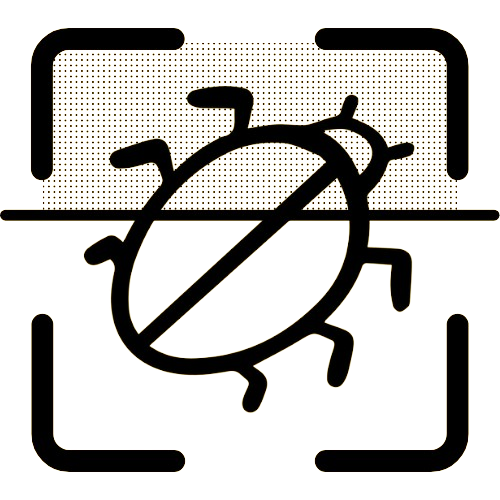The Ultimate Guide to Quick Bed Bug Detection at Home
October 16, 2025
Bed bug detection can be an overwhelming task, particularly when it comes to confirming their presence quickly and efficiently. As stress-inducing as they might be, these nocturnal pests can be managed with the right knowledge and tools. In this comprehensive guide, we'll explore quick bed bug detection methods at home, which can provide peace of mind and pave the way for effective treatment plans. Whether you're seeking adept tips for a home inspection for bed bugs or practical advice on bed bug behavior, we've got you covered.
Understanding Bed Bug Behavior
Understanding what guides bed bug behavior is crucial for quick detection and effective control. Recognizing their habits will not only save you time during inspections but also enhance your preventative strategies.
What Attracts Bed Bugs
Bed bugs are primarily drawn to warmth, carbon dioxide, and dark spaces. They thrive in environments that provide easy access to their primary food source: human blood. Although cleanliness isn't a significant factor, regular housekeeping does help in early detection since clutter provides more hiding spots.
Common Hiding Spots
These pests commonly take refuge in areas close to where people sleep. Typical hiding spots include mattress seams, box springs, bed frames, and headboards. However, they can also be found in luggage, furniture, and even behind wallpaper and electrical outlets. Knowing these common hiding areas can streamline the inspection process, allowing for a more efficient and early detection.
Essential Tools for Bed Bug Detection
Detecting bed bugs early often necessitates a mix of traditional and state-of-the-art tools. Being equipped with the right tools can expedite the identification process and help distinguish bed bugs from other insects.
Traditional and Technological Tools
Traditional tools such as flashlights and magnifying glasses are helpful in spotting bed bugs in their hiding spots. Sticky traps can also serve as preliminary indicators of an infestation. However, technological advancements have paved the way for more accurate detection, such as with bed bug sniffing dogs or automated devices.
A promising technological leap is the AI-powered tools like the Bedbug-Scanner, which can analyze images for potential infestations, offering you a fast and reliable means to confirm the presence of bed bugs.
Quick Inspection Methods to Identify Bed Bugs
Having established the behavioral patterns and equipped with the necessary tools, conducting a thorough inspection becomes both feasible and efficient. Here's how you can proceed:
Room-by-Room Checklist
Begin by dividing your living spaces into segments for a systematic examination. Prioritize bedrooms and living areas with high human activity. Check mattress seams, beneath couch cushions, along baseboards, and any other potential nooks and crannies.
Nighttime and Daytime Checks
Since bed bugs are nocturnal, a nighttime check could prove more fruitful. Look for activity or evidence such as live bugs, exoskeletons, or eggs. Nonetheless, daytime checks should not be disregarded, as they allow you to identify hidden signs of bed bugs in well-lit conditions.
Signs of Bed Bug Infestation
Accurately identifying the warning signs of a bed bug infestation is crucial for quick detection. Understanding both direct and indirect indicators can prevent you from incurring heavier costs down the line.
Physical and Behavioral Indicators
Look for small reddish or rust-colored stains on bedding. These can occur due to bed bugs being crushed or their blood-filled fecal matter. Bites are another indicator, although they might be mistaken for mosquito bites or rashes. Pepper-like spots on sheets, eggshells, or shed skins are also physical signs of an infestation.
Misleading Signs to Watch Out For
Not every insect sighting or bite suggests bed bugs. Mites, fleas, and mosquitoes can cause bite marks or irritation, while allergens can induce reactions similar to bed bug bites. Being aware of these differences can prevent unnecessary panic or misdirected efforts in pest control.
Using Technology for Accurate Bed Bug Detection
Leveraging technology could enhance your detection efficacy, cutting down time and delivering more precise results.
How to Use Bedbug-Scanner.com Effectively
Using the Bedbug-Scanner is straightforward. Capture clear images of possible infestation spots and upload them to the online tool. The AI analyzes the images to detect visible signs of bed bugs, offering you a confirmation that can guide further pest management steps.
Benefits of AI in Pest Management
AI-driven tools stand out for their ability to assess numerous images rapidly, thereby enhancing the reliability and speed of detections. They offer a non-intrusive and convenient method for regular checks, ensuring that potential infestations are caught before they escalate.
In conclusion, quick bed bug detection hinges on a sound understanding of these intruders, the strategic use of technology, and keen observation of infested environments. Conducting regular inspections, armed with the right knowledge and tools, can safeguard your home against unwelcome guests. Empower yourself with our cutting-edge tool and free app at Bedbug-Scanner.com to ensure accurate and efficient bed bug management.
